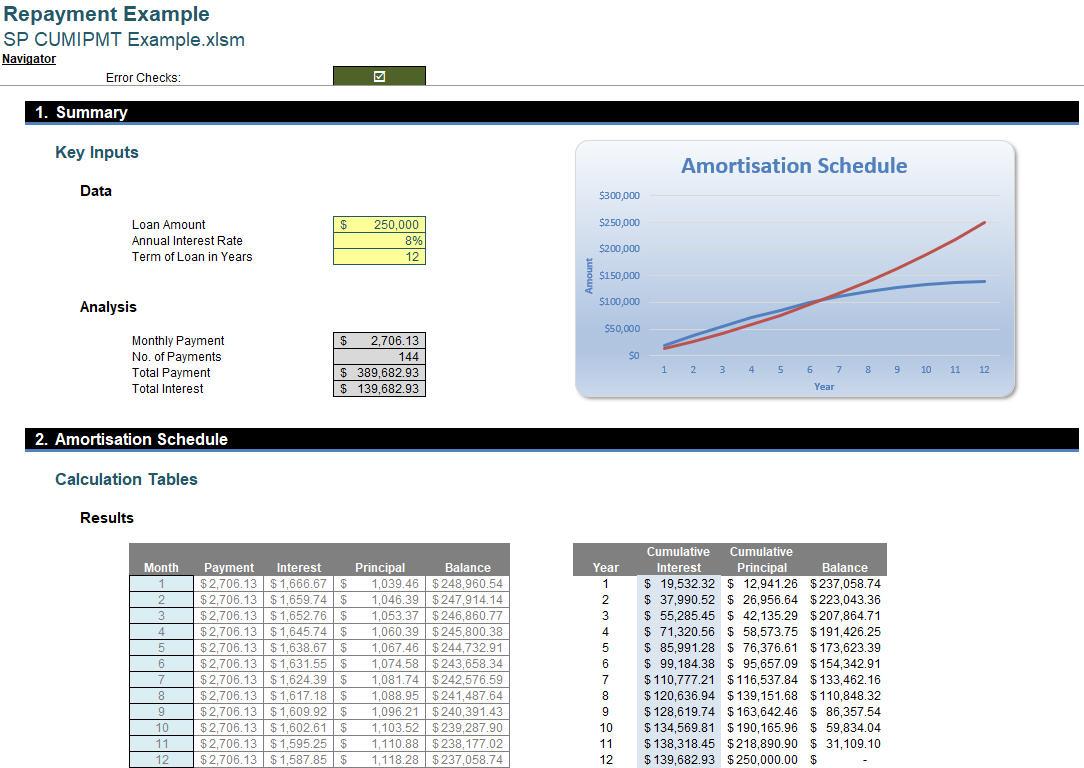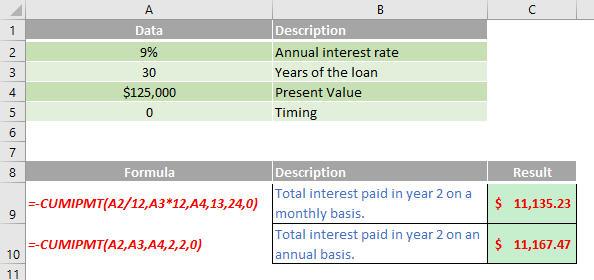A to Z of Excel Functions: The CUMIPMT Function
26 March 2017
Welcome back to our regular A to Z of Excel Functions blog. Today we look at the CUMIPMT function.
The CUMIPMT function
This function returns the cumulative interest paid (“cumulative interest payment”) on a loan between a designated start_period and end_period given a constant periodic discount rate.

The example illustrated above may be downloaded here.
The CUMIPMT function employs the following syntax to operate:
CUMIPMT(rate, nper, pv, start_period, end_period, type)
The CUMIPMT function has the following arguments:
- rate: this is required and represents the interest rate
- nper: this is also required and represents the total number of payment periods
- pv: this is required and represents the present value of the amount under finance
- start_period: this is required and represents the first period in the calculation. Payment periods are numbered beginning with 1
- end_period: this is required and represents the last period in the calculation
- type: this is required and represents the timing of the payment.

It should be further noted that:
- you ensure that you are consistent about the units you use for specifying rate and nper. If you make monthly payments on a four-year loan at an annual interest rate of 10%, use 10%/12 for rate and 4*12 for nper. If you make annual payments on the same loan, use 10% for rate and 4 for nper
- if rate ≤ 0, nper ≤ 0, or pv ≤ 0, CUMIPMT returns the #NUM! error value
- if start_period < 1, end_period < 1, or start_period > end_period, CUMIPMT returns the #NUM! error value
- if type is any number other than 0 or 1, CUMIPMT returns the #NUM! error value.
Please see my example below:

Other key points:
- to get a monthly rate, divide the interest rate by 12 (the number of months in a year) and multiply the years the money is paid out by 12 in order to get the number of payments
- in Excel Online, to view the result in its proper format, select the cell, and then on the ‘Home’ tab and in the ‘Number’ group, click the arrow next to ‘Number Format’ and select ‘General’.
We’ll continue our A to Z of Excel Functions soon. Keep checking back – there’s a new blog post every business day.
A full page of the function articles can be found here.

